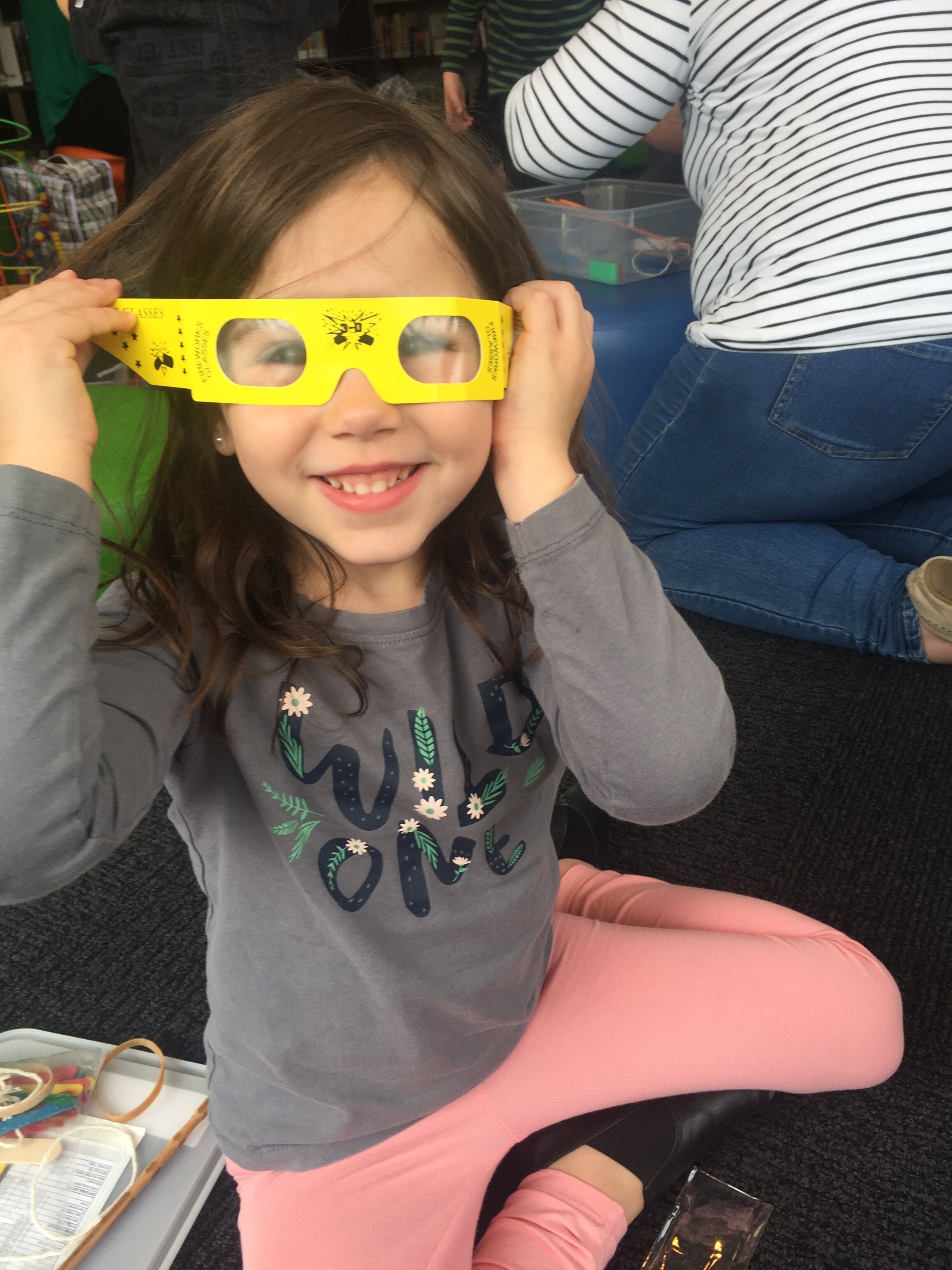LIGHT AND SOUND










Investigate SOUND, LIGHT, and COLOUR through multiple hands-on activities.
You can also choose ‘light’ or ‘sound’ as separate workshop topics.
LIGHT and COLOUR
Discuss - what is light? Sources of light.
Investigate - Students each explore with their own individual ‘discovery box’ full of light related science materials. The presenter leads the group to investigate the contents together.
Discover - the difference between transparent, translucent and opaque materials.
Investigate - refraction (light bending) and reflection (light bouncing off a surface).
Create - rainbows with CDs and torches.
Discover - rainbow glasses, and why rain makes rainbows.
Make - an image using light through a magnifying glass.
Learn - how light travels to our eyes.
Predict and test - mixing coloured light using coloured filters.
Explore - a Hodson Light Box (cool science tool). The best way to see how light travels, refracts, and reflects.
Seeing sound vibrations - hum to watch the sprinkles dance!
SOUND
Discuss - what is sound? How is it made?
Model - how sound travels using a slinky.
Explore - do different materials all make the same sound?
Feel - sound vibrate through a screaming balloon.
See - sound vibrate by making sprinkles dance.
Experiment - using tuning forks to transfer sound vibrations to foil trays.
Investigate - a musical coat hanger to discover how sound travels through materials.
Match - different sounds by listening to shaker eggs.
Learn - how sound travels to our ears, and through different mediums.
Predict and test - does sound travel better through air/water/string?
Discover - how length relates to pitch?
Create sound vibrations - using a buzz cup instrument that each child gets to keep!
MAKE A BOOKING NOW →
CURRICULUM LINKS;
VEYLDF Learning Outcomes
Outcome 1, Identity - through hands-on science activities, children are supported to act with self-confidence and autonomy, seeking and accepting new challenges, and demonstrating initiative by asking questions.
Outcome 2, Connection – science workshops provide an opportunity for a shared group experience, where everyone participating is included and can contribute. Children often work with partners to share science activities, strengthening their connection to classmates. Science workshops reveal to children the science they use in daily life, and connect them to the bigger world of scientific knowledge.
Outcome 3, Wellbeing - inquiry-based science activities encourage perseverance and resilience in the face of new learning situations. Children experience wellbeing and a sense of achievement through hands-on learning.
Outcome 4, Learning - science workshops encourage children to be curious and enthusiastic about their learning. When given opportunities to generate questions about situations and phenomena, make predictions, carry out courses of action and evaluate results, children are expanding their scientific thinking skills. This creates learning dispositions that are essential for 21st century children, and underpin all future learning.
Outcome 5, Communication – science workshops introduce new vocabulary through scientific language. Children express and share their ideas. Scientific communication includes children’s recording/documenting of their findings.
Victorian Curriculum Content
People use science in their daily lives (VCSSU041)
Light and sound are produced by a range of sources and can be sensed (VCSSU049)
Objects are made of materials that have observable properties (VCSSU044)
Respond to and pose questions, and make predictions about familiar objects and events (VCSIS050)
Participate in guided investigations, including making observations using the senses, to explore and answer questions (VCSIS051)
Compare observations and predictions with those of others (VCSIS054)
